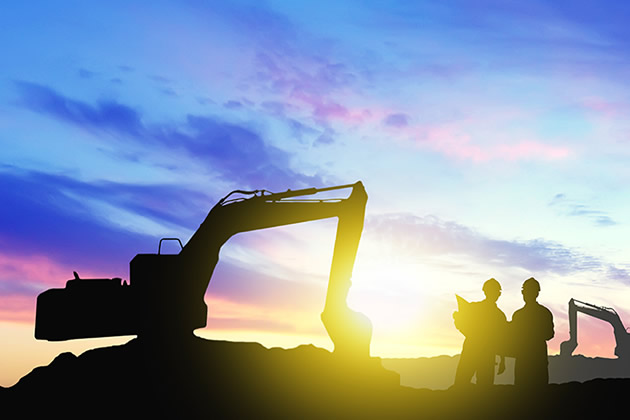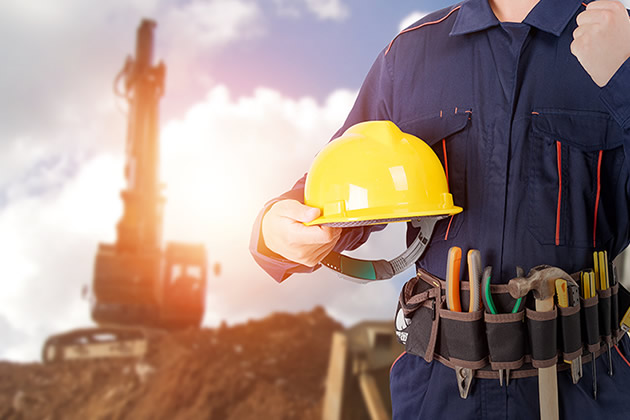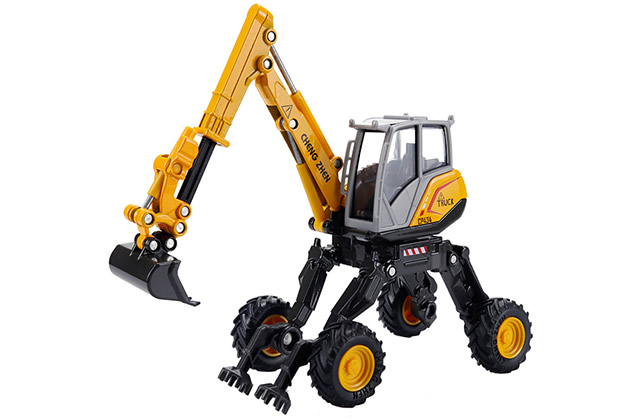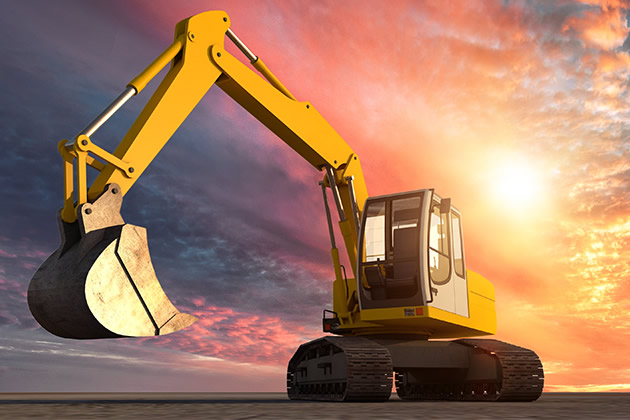1. Common faults and troubleshooting methods of bridge cranes
1. Hook
The hook is a bridge type The fetching device is the most commonly used in cranes. It bears the entire load of lifting. During use, once the hook is damaged and broken, it may easily cause a major accident. The cause of hook damage and fracture is that friction and overload cause cracks, deformation, damage and fracture of the hook. In order to prevent the hook from malfunctioning, overload lifting is strictly prohibited during use. During the inspection, attention should be paid to the opening of the hook and the wear and tear of dangerous sections. At the same time, the hook must be annealed regularly. Once the hook is If cracks are found, they must be scrapped in accordance with GB10051-88, and the hook must not be repaired by welding. Special equipment managers shall check whether the hook can be used in accordance with the requirements of GB10051-88.
2. Steel wire rope
(1) Failure analysis
The main reason for wire rope breakage is overloading , and it is also related to the number of times of threading and winding on pulleys and drums. Each time the wire rope is threaded and wound, a process occurs from straight to curved and then from curved to straight. The more times it is threaded and wound, the easier it is to be damaged and broken. Secondly, the breakage of the wire rope is related to the diameter of the bypass pulley and drum, the working environment, the type of work, and the maintenance status.
(2) Preventive measures
① The lifting capacity of the crane should not exceed the rated lifting capacity during operation.
②The wire rope of the crane should be selected according to the type of work and environment.
③ The wire rope must be lubricated regularly (the lubrication cycle shall be determined according to the working environment).
④ Do not subject the wire rope to sudden impact when the crane is operating.
⑤ Steel wire ropes in environments with high temperatures and corrosive media must have isolation devices.
3. Reducer gear
(1) Fault analysis
The reducer is a bridge type The important transmission component of the crane transmits torque through gear meshing and adjusts the high-speed operation of the motor to the required speed. During the process of transmitting torque, gears will suffer from tooth breakage, tooth surface pitting, tooth surface gumming, and tooth surface wear. The reasons for gear failure due to mechanical failure are as follows:
① Fatigue fracture caused by short-term overload or impact load, repeated bending.
②The tooth surface is not smooth, there are raised points causing stress concentration, or the lubricant is not clean.
③ Lubrication failure due to excessive temperature.
④ Wear is caused by hard particles entering the friction surface.
(2) Preventive measures
①The crane cannot liftWhen used with a load, starting and braking should be slow and smooth, and sudden reverse movement is prohibited unless under specific circumstances.
② Replace the lubricant in time, clean the casing, and select the appropriate type of lubricant.
③ Always check whether the lubricating oil is clean; if the lubricating oil is found to be unclean, replace it in time.
4. Drum and wire rope pressure plate
The drum is an important stress-bearing component of the crane. During use, the drum wall will become thinner and holes will appear. and breakage failure. The cause of these failures is that the drum and wire rope are in contact with each other and rub against each other. When the drum is thinned to a certain extent, it will break because it cannot withstand the pressure exerted by the wire rope. In order to prevent the occurrence of mechanical accidents such as drums, according to national standards, the drum wall should be replaced in time when the wear reaches 20% of the original value or cracks appear. At the same time, pay attention to the operating environment and lubrication of the drum and wire rope.
5. Brake
(1) Failure analysis
The brake is an important part of the bridge crane Safety components have functions such as preventing the falling of suspended objects and realizing parking. Only intact brakes can ensure the accuracy of crane operation and safe production. During crane operations, the brakes may have insufficient braking force, sudden brake failure, and the brake wheels may Mechanical failures such as excessive temperature, smoke from the brake pads, and failure of the brake arms to open. The causes of these mechanical failures are analyzed as follows:
① The brake band or brake wheel is too worn; a small piece of the brake band is partially detached; the main spring is adjusted too loose; the brake band and the brake wheel are There is grease between the moving wheels; there are stuck places or excessively worn parts outside the movable hinge; the locking nut is loose and the entire tie rod is loose; the impeller of the hydraulic push rod brake release is not flexible in rotation.
② The brake pad is severely or in large pieces detached, or the long-stroke electromagnet is stuck, the main spring fails, or the main components of the brake are damaged.
③The gap between the brake and the pad is adjusted too large or too small.
④The hinge is stuck or the braking torque is adjusted too large, or there is a lack of oil and air in the cylinder of the hydraulic push rod brake release, or the grease used in the hydraulic push rod brake release does not meet the requirements. requirement, or there is dirt between the brake pad and brake wheel.
(2) Preventive measures
Inspect and maintain the brakes regularly. The brakes of the lifting mechanism must be used once per shift, and the brakes of the operating mechanism must be inspected every day. Once, mainly check the following contents:
① Whether there is any jamming and wear at the hinges, and whether there is any looseness in the fasteners.
② Whether the movements of each movable part are normal.
③Whether the hydraulic system is normal.
④ Whether the wear between the brake wheel and the brake belt is normal and clean.
Determine whether the brake is normal based on the inspection, and resolutely prevent diseased operation. At the same time, the brake must be lubricated and maintained regularly.. In order to ensure the safe operation of the crane, the brakes must be adjusted frequently to ensure the working requirements of the corresponding mechanism.
6. Wheels and Tracks
Common faults in the wheels and tracks during the operation of the crane are the gnawing of the wheels and the unequal height and slipping of the trolley. . There are many reasons for gnawing, and the forms of gnawing are diverse. In mild cases, tunnel gnawing affects the life of the crane, and in severe cases, it can cause serious casualties. Therefore, special equipment managers must pay sufficient attention to tunnel gnawing.
The main causes of tunnel gnawing are unsatisfactory errors during installation, uneven friction, excessive wear of parts in the cart’s transmission system, and excessive key connection gaps causing brake desynchronization. Therefore, the special equipment departments of each unit must find qualified units to install and repair cranes to ensure the safety and operating life of the equipment; at the same time, special equipment managers must strengthen daily inspection and management to avoid crane gnawing. If there is a mechanical failure in the tunnel, during the inspection process, we must carefully and carefully find out the cause of the tunnel chewing and take corresponding measures.
The unequal height of the trolley wheels is an extremely unsafe factor in the operation of the crane. The unequal height of the trolleys causes one wheel to hang in the air during operation or the wheel pressure is too small, which may cause the vibration of the trolley body. The factors causing the unequal height of the trolley wheels are caused by many reasons, but the main reason is that the installation error does not meet the requirements and the uneven weight of the trolley design itself. Therefore, the fault of unequal height of the trolleys must be comprehensively analyzed, and the trolleys are not equal in height. The high problem is solved well.
During the operation of the crane, due to unclean tracks, excessive starting, uneven trolley tracks, elliptical wheels, and unequal wheel pressures between the driving wheels, the trolley will produce a slip ring, which requires Special equipment managers must be careful during the inspection process and solve problems promptly to avoid car slipping.
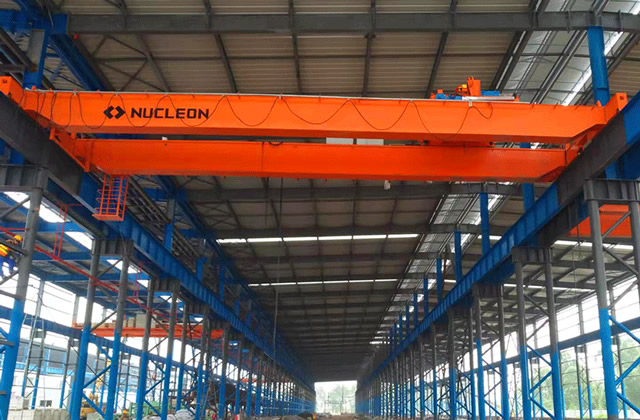
2. How to maintain the bridge crane
1. Weekly inspection and maintenance
Maintenance and inspection once a week , the inspection and maintenance contents are as follows:
(1) Check whether the nuts, cotter pins, and positioning plates on the bridge crane brake are complete and loose, the levers and springs have no cracks, and the pin bolts on the brake wheel are Check whether the buffer washer is loose and complete; whether the brake is reliable. When the brake is turned on, the opening of the brake shoe should be less than 1.0mm and the gap between the brake pad and both sides of the brake wheel should be equal, and each shaft pin should not be stuck.
(2) Check the safety protection of the bridge craneCheck whether the closing and limit switches are accurately positioned, flexible and reliable in operation, especially whether the rising limit switch is reliable.
(3) Check whether the wire rope winding on the drum and pulley of the bridge crane is normal, whether there are degrooving, stringing, knotting, twisting, etc., whether the bolts of the wire rope pressure plate are tightened, whether there are double Nut locking device.
(4) Check whether the fastening screws on the coupling seal cover of the lifting mechanism of the bridge crane are loose or short.
(5) Check whether the transmission of each mechanism is normal and whether there are any abnormal noises.
(6) Check whether the lubrication condition of all lubricating parts is good.
(7) Check whether there are foreign objects on the crane track that hinder the operation of the bridge crane.
2. Monthly inspection and maintenance
Maintenance and inspection are performed once a month. In addition to weekly inspection and maintenance content, the inspection and maintenance content also includes:
(1) Check that the wear amount of the crane brake pad lining should not exceed 2mm, and the contact area between the lining and the brake wheel should not be less than 70%; check the installation and fixation condition of each pin and the wear and tear According to the lubrication conditions, the wear of each pin should not exceed 5% of the original diameter, the wear of the small shaft and the spindle should not be greater than 5% of the original diameter, and the ovality should be less than 0.5mm.
(2) Check the wear of the wire rope, whether there is any broken wire, etc., and check the lubrication condition of the wire rope.
(3) Check whether there are cracks in the hook, whether the wear of the dangerous section exceeds 5% of the original thickness; whether the anti-loosening device of the hook nut is complete, and whether the various parts on the hook group are complete and reliable . The hook should rotate flexibly without jamming.
(4) Check whether all the bolts of the crane are loose or short.
(5) Check the tightening condition of the bolts on the motor, reducer and other bases, and tighten them one by one.
(6) Check the lubrication condition of the overhead crane reducer. The oil level should be within the specified range, and measures should be taken to prevent leakage in oil leakage areas.
(7) Lubricate the gears.
(8) Check the wear of the wire rope at the balance pulley, and lubricate the pulley and pulley shaft.
(9) Check the condition of the pulley to see if it is flexible, damaged or cracked. Pay special attention to the wear of the fixed pulley shaft.
(10) Check the brake wheel. The unevenness of its working surface should not exceed 1.5mm, the brake wheel should not have cracks, and its radial circular runout should be less than 0.3mm.
(11) Check the coupling. The key and keyway should not be damaged or loose; the axial movement of the transmission shaft between the two couplings should be 2~7mm.
(12) Check the operation status of large and small cars. There should be no phenomena such as rail gnawing, three fulcrums, and twisting when starting and stopping. Check the wear of the wheel rim and tread. The rim thickness and wear should not exceed 50% of the original thickness, and the wheel tread wear should not exceed 3% of the original diameter of the wheel.
(13) Check the condition of the cart track to see if the bolts are loose or short, whether the pressure plate is fixed on the track, whether there are cracks or breaks in the track; whether the gap at the joints of the two tracks is 1~2mm (in summer) or 3~5mm (Winter), check whether the up and down, left and right misalignment of the joint exceeds 1mm.
(14) Clean the crane to remove dirt.
3. Annual inspection and maintenance
Annual maintenance and inspection should include the following in addition to the monthly inspection content:
(1) Check the deformation of the main beam. Check the condition of the trolley track. When unloaded, the downward interference of the main beam should not exceed 1/20xx of its span; the inward horizontal side bend of the main beam should not exceed 1/1500 of the measured length; the track of the trolley should not cause jamming, and the top and side surfaces of the track should not be worn ( Single side) shall not exceed 3mm.
(2) Check the condition of the drum. The wear of the drum wall should not exceed 20% of the original wall thickness, and the convex peaks of the rope groove should not become sharp.
(3) Tighten all connecting bolts and fastening bolts on the crane.
(4) Check the gear meshing and wear of all reducers. The tooth surface pitting damage should not exceed 30% of the meshing surface, and the depth should not exceed 10% of the original tooth thickness (fixed chord tooth thickness ); the ratio of the tooth thickness wear of the gear to the original tooth thickness shall not exceed 15% to 25%; check the condition of the bearing; replace the lubricating oil.
(5) Check the condition of the large and small wheels, lubricate the wheel bearings, and eliminate rail gnawing.
(6) Check whether the main welds of the main beam and end beam have open welding or corrosion. The corrosion should not exceed 10% of the original plate thickness. Check whether there are fatigue cracks in the main stress-bearing parts; various Check whether the guardrails and brackets are intact; check and tighten the main beam and end beam bolts.
If the website content violates your rights, please contact us to delete it。



